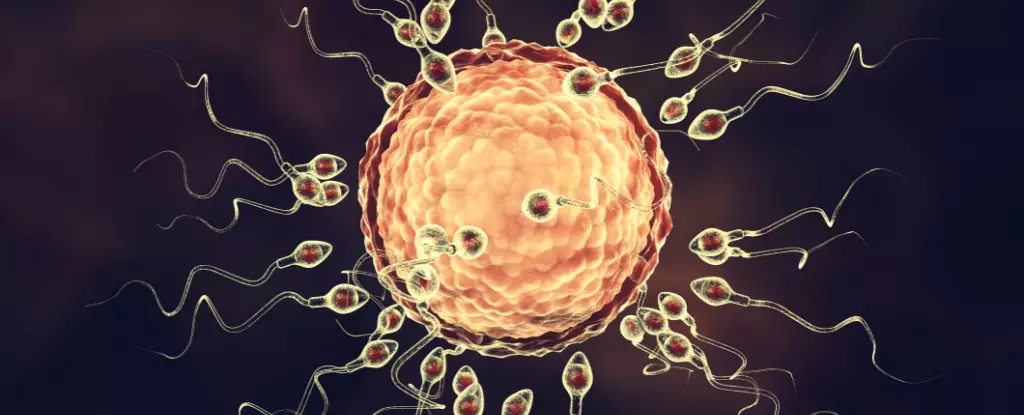The process of fertilization is a breathtakingly intricate dance between sperm and egg, where a single sperm propels itself head-first into the egg, initiating a series of chemical changes that block further sperm from entering. While the significance of these molecular events cannot be overstated, the details of this process have remained elusive. However, a groundbreaking study conducted by researchers at ETH Zurich and Ludwig Maximilian University of Munich has shed new light on the complex interactions between proteins crucial for fertilization.
Traditionally, scientists have employed techniques such as cryo-electron microscopy and protein crystallography to study protein structures. However, these methods only provide static images and cannot capture the dynamic interactions that occur within cells. Proteins in their natural environment are in a constant state of flux, folding into shape, binding to partners, and detaching from them. To overcome this limitation, the researchers turned to computer simulations using a Swiss supercomputer. By simulating the interactions between the proteins JUNO and IZUMO1 in water, the researchers aimed to capture a more accurate representation of their behavior inside cells.
The simulations revealed that the JUNO-IZUMO1 complex is stabilized by short-lived and weak non-covalent interactions between the protein molecules. These interactions, lasting less than 50 nanoseconds each, play a crucial role in initiating the recognition and adhesion process between germ cells. Understanding the consequences when these interactions are interrupted by other molecules or mutations could provide valuable insights into contraception and infertility.
One of the key findings of the study was the role of zinc ions in destabilizing the JUNO-IZUMO1 complex. Shortly after fertilization, the fertilized egg releases a surge of charged zinc atoms, believed to prevent additional sperm from entering by hardening the egg’s outer coat. The simulations showed that the presence of zinc ions caused IZUMO1 to undergo a conformational change, adopting a boomerang shape that hindered its ability to firmly bind to JUNO. Consequently, this suggests that the release of zinc ions by the egg may also impede the binding of approaching sperm.
Read More: Abatacept Shows Promise in Preventing Rheumatoid Arthritis
The Implications for Conception and Beyond
While these findings are based on computer simulations, they provide valuable insights into the intricacies of fertilization. By unraveling the molecular interactions between proteins, researchers gain a deeper understanding of the mechanisms that drive conception. Furthermore, these insights may pave the way for the development of novel contraceptives and treatments for infertility.
A Glimpse into the Unseen
“We can only find out something like this with the help of simulations,” highlights Viola Vogel, a biophysicist at ETH Zurich and senior author of the study. The ability to simulate protein interactions in a natural environment opens new avenues of research. By providing a glimpse into the dynamic world of proteins, simulations offer a promising approach to unraveling the mysteries of biological processes.
This groundbreaking study sheds light on the intricate molecular events that occur during fertilization. By utilizing computer simulations, researchers have uncovered the delicate web of interactions between proteins JUNO and IZUMO1, offering insights into the recognition and adhesion process between germ cells. Furthermore, the study highlights the role of zinc ions in destabilizing the JUNO-IZUMO1 complex, potentially influencing the binding of approaching sperm. Overall, these findings bring us one step closer to understanding the complex dance of fertilization, paving the way for advancements in contraception and treatments for infertility.


Leave a Reply